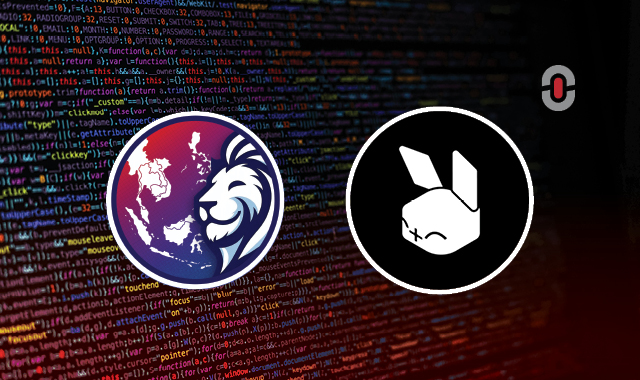- Home
- Resource Center
- Articles & Videos
- Unlocking the Power of LAM and LLM: A Journey Through Asian Perspectives
18 November 2024
Unlocking the Power of LAM and LLM: A Journey Through Asian Perspectives

ChatGPT was released to the world in November 2022. In a time frame of just over one year, we have seen incredible advances in artificial intelligence (AI), with multiple AI tools based on large language models emerging like mushrooms after rain.
While the Western world is getting used to these tools and seeing how they can simplify business processes, the East is not lagging far behind. These developments are certainly worth watching closely because of their immense business potential.
That’s why this article takes a deep dive into what large language models and large action models are with examples, discusses the differences between the two are, and provides a few uses and applications for businesses in Asia. Let’s take a closer look.
What Are Large Language Models (LLMs)?
Large language models or LLMs, as they’re frequently called, are machines that are capable of understanding and reproducing human language. These AIs are trained on vast datasets of linguistic inputs, across various languages, and can produce text based on written prompts or tokens.
As large language models continue to improve, this is going to have a significant impact on how we use and interpret different languages, especially across the Asian region.
One major example of a large language model was developed in Singapore and is called SEA-LION. This stands for Southeast Asian Languages In One Network. It’s an open-source large language model that has been trained on 11 Asian languages, which include: Indonesian, Thai, Vietnamese, Filipino, Burmese, Khmer, English, Chinese, Malay, Tamil, and Lao.
The implications of this LLM are huge. That’s because large language models such as SEA-LION can help users visiting different Asian countries better navigate their surroundings.
From recommendations about historical or cultural attractions to determining the best route to get from A to B, SEA-LION is dramatically changing the landscape.
However, it’s not just well-suited for tourists. It’s an excellent helper for businesses in Asia, too. We cover this in more detail below, so keep reading to find out more.
What Are Large Action Models (LAMs)?
Next, we turn our attention to large action models or LAMs. These are AI tools that take large language models a leap further. That’s because they can not only produce text and information. They can also “act” in a way that mirrors human interactions.
It essentially learns and continuously improves by observing human interactions and replicating them. Just two simple examples of how it can be used include giving it verbal instructions to call a taxi in a Southeast Asian country or book accommodation.
Rabbit R1 is the AI tool developed in Asia that makes this possible. But what is Rabbit? Considering the fact that most online users utilize their smartphones for obtaining information, Rabbit was developed with this in mind. It is a small, handheld device that runs on the Rabbit operating system and it can respond to spoken or written commands that take action.
What normally happens with smartphone usage is that users have to navigate to an app first before being able to take an action. However, with Rabbit in the palm of your hand, the AI tool navigates apps like a hot knife through butter, enabling much faster responses and actions that help users achieve their aims — whether individuals or businesses.

Differences between LLMs and LAMs
Despite frequent confusion, large language models and LAMs are quite different from each other. Here are a few criteria worth exploring as we set out the key differences:
- Core function: While an LLM understands and generates language, LAMs take this a step further and integrate complex reasoning and actions.
- Primary strength: LLMs possess formal linguistic capabilities and generate coherent and relevant text. However, LAMs expand on this functionality and generate actionable outputs.
- Reasoning ability: LLMs use single-step reasoning that is based on language patterns. Meanwhile, LAMs use multi-step reasoning that can handle complex and interconnected tasks.
- Contextual understanding: Large language models may be good at understanding context in text but they are limited in applying external knowledge. LAMs, on the other hand, are highly capable of understanding and applying both textual and external content.
- Problem-solving: LLMs are able to offer information and answer questions, based on existing data. LAMs, meanwhile, can offer solutions, engage in strategic planning, make reasoned decisions, and act autonomously.
- Learning approach: LLMs are primarily trained through pattern recognition based on large datasets. LAMs do all this and more. For instance, they engage in self-assessment and learning through advanced algorithms.
- Application scope: LLMs can create content, do simple Q&A translations, and offer chatbots. LAMs go much further and can build autonomous applications that require strategic planning, advanced research, and specialized task execution.
Application and Uses for Businesses in Asia
Both large language models, such as SEA-LION, and large action models, like Rabbit R1, have multiple applications and uses that can be implemented by businesses in Asia. Here are a few use cases where this technology has the potential to shine:
- Healthcare: In healthcare, AI tools can help with diagnostics and patient treatment.
- Finance: In the financial sector, LAMs can help in risk measurement, fraud discovery, and algorithmic transactions.
- Automotive: Examples of aspects LLMs and LAMs can help with include self-governing vehicles and improving vehicle safety systems.
- Other business applications: Other business applications include using LLMs and LAMs as chatbots, coding assistants, meeting summarizers, translators, generating product description, translating content for legal compliance processes, etc.
Conclusion
The world we live in may seem surreal at this point with so many large language models and LAMs emerging. However, adoption of AI tools and tech is the future. Businesses already established in Asia and those seeking entry into the Asian market can make use of these tools to help them streamline their operations.
And tech such as SEA-LION not only produces text, but it also takes into account cultural nuances, which is critical for business success in Asia. Any business that is looking for market entry in Asia will be well positioned to take advantage of the right tools and tech for their needs to ensure smooth market entry processes and post-market-entry success.

Desi Tzoneva
Desi Tzoneva has a Bachelor of Laws degree from the University of South Africa and a Master's in International Relations from the University of Johannesburg. For the past five years, she's been a content writer and enjoys unraveling the intricacies of the translation and localization industry. She loves traveling and has visited many countries in Asia, Europe, Africa, and the Middle East. In her spare time, she enjoys reading. She will also never say no to sushi.


